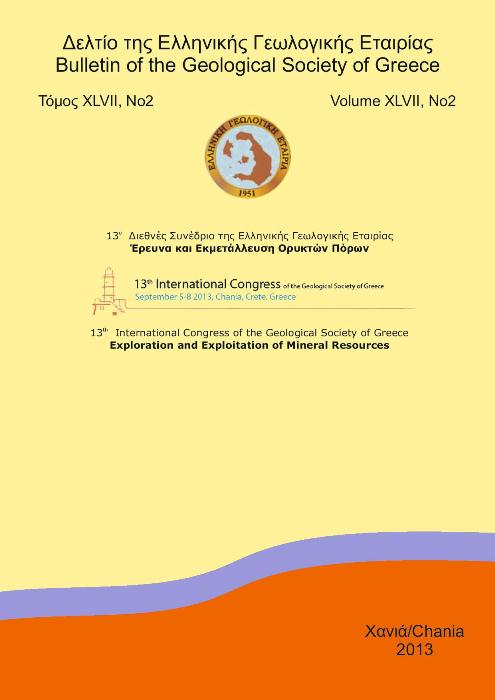MAGNETIC FABRICS OF THE TERTIARY VRONDOU PLUTONIC COMPLEX, NORTHERN GREECE.
Περίληψη
The emplacement and tectonic evolution of the Tertiary Vrondou granitoid in the Greek Rhodope has been studied by a combination of field tectonic, microtextural and anisotropy of magnetic susceptibility (AMS) methods. The Vrondou pluton is composed of at least two intrusions, a Mid-Oligocene one at its eastern and an Early Miocene at its western parts. Room for the emplacement in both cases was provided by the opening of an extensional ramp space within a several km thick, mid-crustal subhorizontal shear zone, with a top to the SW sense, active during the Mid-Oligocene to Early Miocene period. The older eastern part of the pluton is much less deformed than the younger western part. Magmatic textures are well preserved in the older intrusion whereas they are scarcely present in the younger one. They indicate a NW-SE direction of magmatic flow in both cases. Sub-solidus plastic deformation affected mostly the younger western part of the pluton and only locally the older eastern one. In both cases mineral lineations trending NE-SW were developed. An increase in the shear rate by the Early Miocene or a localization of shear mainly in the west, in combination with the more silica saturated rock types present there, are probably the reasons for the different deformational behaviour of the two parts of the pluton.
Λεπτομέρειες άρθρου
- Πώς να δημιουργήσετε Αναφορές
-
Zananiri, I., Dimitriadis, S., Kondopoulou, D., & Kilias, A. (2004). MAGNETIC FABRICS OF THE TERTIARY VRONDOU PLUTONIC COMPLEX, NORTHERN GREECE. Δελτίο της Ελληνικής Γεωλογικής Εταιρείας, 36(3), 1316–1325. https://doi.org/10.12681/bgsg.16475
- Ενότητα
- Γεωφυσική

Αυτή η εργασία είναι αδειοδοτημένη υπό το CC Αναφορά Δημιουργού – Μη Εμπορική Χρήση 4.0.
Οι συγγραφείς θα πρέπει να είναι σύμφωνοι με τα παρακάτω: Οι συγγραφείς των άρθρων που δημοσιεύονται στο περιοδικό διατηρούν τα δικαιώματα πνευματικής ιδιοκτησίας επί των άρθρων τους, δίνοντας στο περιοδικό το δικαίωμα της πρώτης δημοσίευσης. Άρθρα που δημοσιεύονται στο περιοδικό διατίθενται με άδεια Creative Commons 4.0 Non Commercial και σύμφωνα με την οποία μπορούν να χρησιμοποιούνται ελεύθερα, με αναφορά στο/στη συγγραφέα και στην πρώτη δημοσίευση για μη κερδοσκοπικούς σκοπούς. Οι συγγραφείς μπορούν να: Μοιραστούν — αντιγράψουν και αναδιανέμουν το υλικό με κάθε μέσο και τρόπο, Προσαρμόσουν — αναμείξουν, τροποποιήσουν και δημιουργήσουν πάνω στο υλικό.










